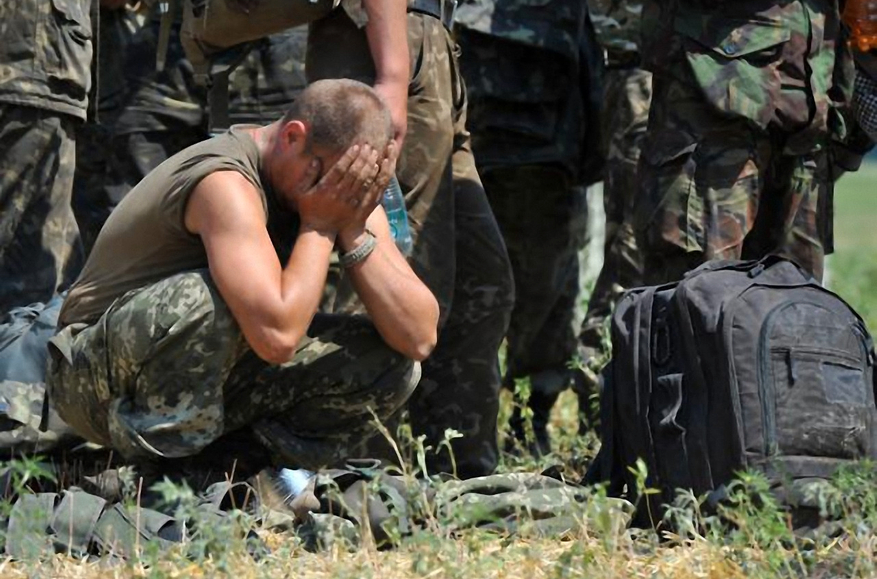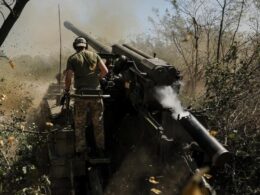Russian forces are attempting to breach Ukrainian defenses along the Donbas front, where the situation has become critical in some places. Their tactics have changed significantly from what was seen during the battles for Bakhmut and Avdiivka. Instead of launching large-scale attacks that turned into "meat grinders" with dozens of soldiers charging across open fields, they now send in smaller groups using motorcycles, civilian vehicles, and even electric scooters.
In his analysis, BBC Ukraine war reporter Abdujalil Abdurasulov notes that these small groups attack from multiple directions in succession. While many are eliminated, the sheer number of attempts means some groups eventually break through to reach Ukrainian positions. Despite heavy Russian losses, this approach lets them capture about one village per day.
This change in tactics was largely driven by the widespread use of drones on the battlefield. Modern surveillance and attack drones make it nearly impossible for large groups of soldiers to move without being detected and targeted, forcing Russians to adapt with smaller, more mobile units.
Russians ditch tanks for motorcycles
According to Sergeant Ivan Klebaniuk from Ukraine's 68th Brigade, Russians now typically advance in small groups, often led by heavy armored vehicles like tanks or APCs, followed by motorcycles, buggies, and modified civilian vehicles. Once they contact Ukrainian positions, they retreat 200-300 meters and report the Ukrainian location. Then, Russian fire support saturates the area with FPV drones, artillery, tanks, and Grad rockets. They destroy the position altogether and often allow Russians to occupy the location.
Civilian vehicles' mobility provides certain advantages, making them harder targets due to their speed and small size. Winter weather aids Russian advances, with morning fog and frozen ground facilitating movement. Ukrainian reconnaissance drones cannot monitor enemy movements effectively during rain or snow.
To consider just one example, these endless small-group attacks are occurring in Velyka Novosilka, a major Ukrainian Armed Forces fortified area that protects the flank of the Zaporizhzhia frontline section. In one recent Russian attack, several MT-LB armored personnel carriers packed with infantry attempted to break through to a village. The carriers were covered with nets and so-called "grills" – metal nets for drone protection. A tank with a mine-clearing plow led the column, clearing the path of mines.
However, aerial reconnaissance from the Bohdan Khmelnytskyi Presidential Brigade detected their movement and destroyed all the equipment using FPV drones.
"For Russians, the equipment isn't the priority. They don't care if it gets burned. Their main objective is to deliver infantry to the target location," the deputy commander of the 3rd Mechanized Battalion of the Presidential Brigade called Arkas explains.
Russia's new tactics exploit gaps in Ukrainian defenses
Russia's superior numbers in both troops and weapons allow them to stretch Ukrainian forces thin and probe for weak points.
A recent assault on Kurakhove's southern flank in Donetsk Oblast demonstrates this strategy. Two Russian soldiers on a motorcycle managed to reach and infiltrate Ukrainian trenches, shooting the defenders stationed there.
"Attempts to dislodge them began immediately. But approaching the trench was impossible – their drones were conducting precision strikes," recalls soldier Anatoliy from the 72nd brigade about that assault.
While all attention was focused on those trenches, an attack began on the other side. As a result, battles were happening simultaneously on two flanks. Finally, the Russians brought in a group under APC cover, right into the center between the two flanks. They went straight through because there were simply not enough Ukrainian soldiers to cover that entire area.
This pattern repeats across the front. On Toretsk's northern flank, where the front line runs along a canal, Senior Lieutenant Yevhen Alkhimov of Ukraine's 28th Separate Mechanized Brigade describes how Russian forces infiltrate individually.
Those who make it through the grey zone gather near Ukrainian positions in treelines. Once their numbers reach 5-8 people, they launch surprise attacks to capture positions.
These methodical assaults continue relentlessly, probing for any weakness in Ukrainian defenses.
Despite record losses, Russian command pushes forward
The Russian military command's calculus remains brutally simple - whether soldiers arrive by motorcycle or on foot, these missions are often just as deadly as the earlier "meat grinder" assaults. From their perspective, success is measured purely by forward progress. If even a single group out of ten reaches Ukrainian positions, Russian generals consider it a victory worth reporting.
Therefore, the Russians prioritize delivering infantry to target locations, regardless of casualties.
The human cost of this strategy has been staggering. According to Ukraine's General Staff, November 2024 set a new record for Russian casualties, with over 45,000 personnel wounded or killed in action. October and September also set similar records, as Russian losses have gradually increased proportionally to the intensity of their attacks. The peak came on 28 November, when Russian forces suffered 2,030 casualties in a single day.
While Russian advances continue despite accelerating attrition rates, a critical question looms: how long can Ukraine's outnumbered and undersupplied military hold back these relentless assaults?
Flying grenade launchers help Ukraine counter Russian tactics
According to Arkas, Russian assault groups rely heavily on electronic warfare (EW) systems to protect their lead armored vehicles. These systems create a protective radius, making it extremely difficult to target following vehicles. Ukrainian forces have adapted by flying around the columns to strike from behind.
Arkas's battalion has developed an additional innovative solution - mounting grenade launchers on drones. When Russian EW systems prevent FPV drones from getting close by jamming their signals or disrupting video feeds, these flying grenade launchers can engage targets from a distance, effectively disabling the electronic warfare equipment.
Related:
- Ukraine triples military tax, but still faces $ 12 billion defense gap in 2024
- Frontline report: Two Ukrainian Marines repel massed Russian infantry assault in Kursk Oblast
- Russian 810th marine brigade from occupied Crimea faces heavy losses in Kursk battles, Russian media Verstka reports
- Russian forces lack resources for major Zaporizhzhia offensive, Ukraine’s military says
- Inside Kremlin’s hidden torture camp for Ukrainians in Belarus
- Can Europe fill in the gap if Trump abandons Ukraine?





